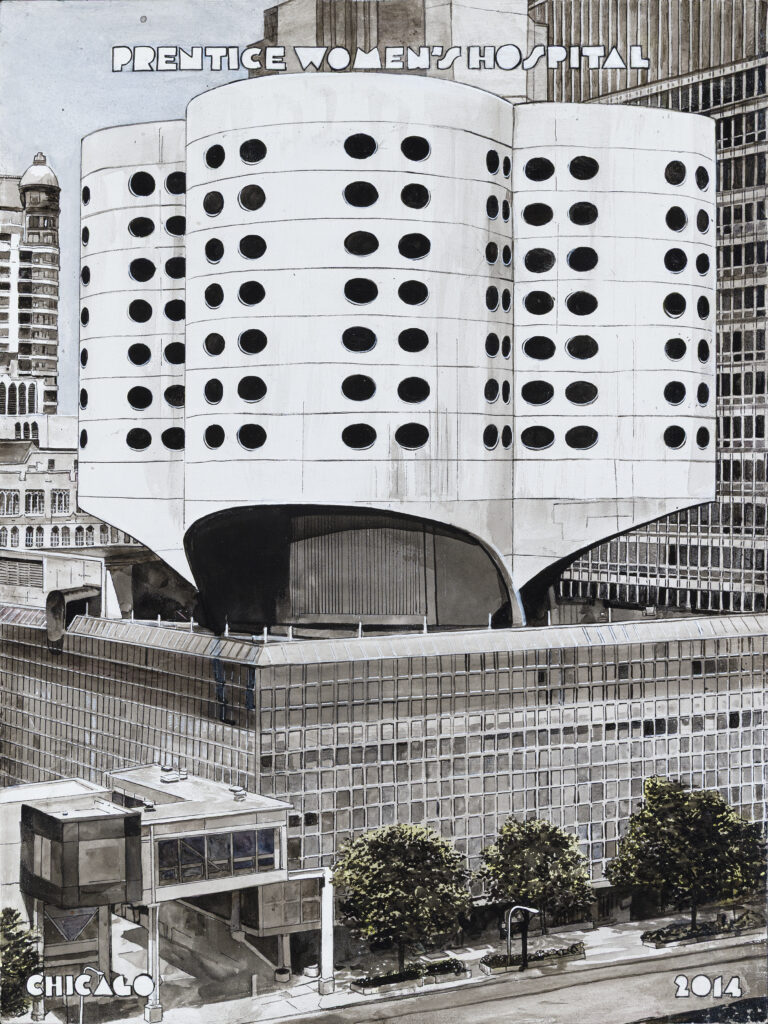Chicago Illinois, USA
Demolished 2014

I was trained as an architect and, having grown up in Washington, DC, have been a fan of sculptural brutalism for as long as I can remember (regularly defending the style against its myriad of haters, which was the case for several decades before brutalism was “rediscovered” as a worthy architectural style). When I got pregnant, I chose a Northwestern practice and was elated to learn that I would be giving birth in this stunning icon designed by Bertrand Goldberg, not knowing that it would only remain open for less than two more years, before facing the wrecking ball. We had been deliberating on names for our first child, and decided that we would need to “meet” him before making the final decision. When he finally entered the world, his father and I both knew immediately which name from our shortlist we would choose: Eero. We named our child after another iconic mid-century modernist architect: Eero Saarinen, and it felt extra fitting that he was born inside this beautiful structure, a lesser-known building by the architect of the iconic and beloved Marina Towers. The local Chicago and international architecture communities came out in support of preserving the building, providing many incredible visions for how to preserve and update the building for Northwestern’s needs, but ultimately lost out to Northwestern’s plans to rebuild Prentice on another site. Eve F.
I worked part-time in Prentice from 1983 until it was demolished. Most people marvel at the shape of the building and its windows, but it was really designed from the inside out and was initially very easy to navigate. It was flexible as well. During its years of service, the building accommodated major remodeling as obstetrical care changed radically. For example, the number of deliveries increased at least 3 fold, lengths of stay were cut in half, everyone wanted a private room, everyone roomed in with their newborns, security became a concern for all hospitals, and the complexity of maternal-fetal medicine skyrocketed. Yet, the building could change and adapt. Northwestern constantly toyed with the style of the interior. It started as a sleek, modernist racehorse, but soon was forced to wear various designer hats. I miss the original Prentice, and I don’t believe that it had to go. Yes, families need up-to-date obstetrical care and medical research is important, but new buildings could have met these needs without sacrificing an architectural gem. Jeff Z.
| The Prentice Women’s Hospital and Maternity Center was located on the downtown campus of Northwestern University. The brutalist building was built between 1972 and 1975 by Bertrand Goldberg & Associates. Its unique design was notable for the early incorporation of computer-aided design. After the new Prentice Women’s Hospital opened in 2011, the building was left empty and Northwestern announced its plans to demolish the building. Despite considerable outcry and a campaign by the National Trust for Historic Preservation, the Chicago Landmarks Commission voted against designating the building as a landmark and Northwestern demolished the old hospital in 2014. The painting is based on an undated photograph by Umbugbene on Wikipedia. |
No. 302